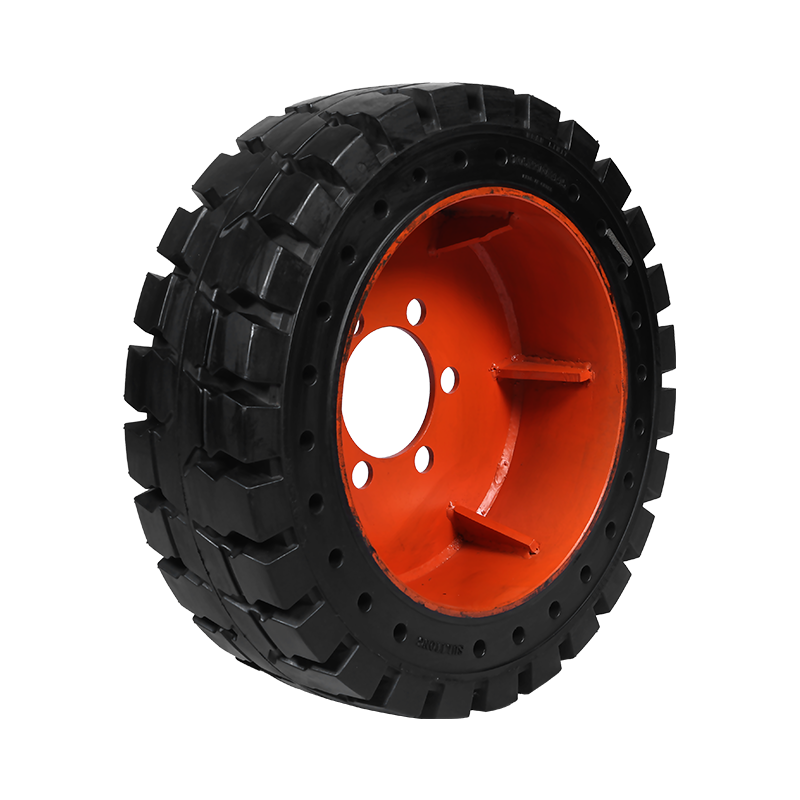Can the stability and durability of Foam filled tires remain stable under extreme temperature conditions?
Foam-filled tires usually have a stable performance in terms of stability and durability in extreme temperature conditions, but this still depends on the foam material used, the design of the tire and the specific working environment. One of the main advantages of foam-filled tires is that they are more adaptable to harsh environments than traditional pneumatic tires, especially in high and low temperatures, and they usually perform better than traditional pneumatic tires.
In low temperature environments (such as ice and snow, cold winter conditions), traditional pneumatic tires usually face the problem of air pressure drop, especially when the temperature drops sharply, the pneumatic tire may be insufficient and elastic, affecting grip and tire performance. Foam-filled tires have the following advantages:
Since foam-filled tires do not contain gas, the air pressure in the tire remains stable regardless of the external temperature changes, avoiding the performance degradation caused by the decrease in air pressure due to low temperature.
Foam materials are usually designed to maintain a certain degree of flexibility in low temperature environments, and will not become brittle or crack like traditional tires. The right foam material can prevent the material from hardening in cold conditions, maintaining the adaptability and comfort of the tire.
In low temperature conditions, the ground may be hard or icy, which is easy to cause the tire to be punctured by sharp objects. Foam-filled tires are filled with special materials, so even if they are damaged, the filler can still maintain the shape and function of the tire, avoiding the risk of pneumatic tires bursting.
However, too low a temperature may cause certain types of foam materials (such as over-hardened plastic foam) to become brittle, so the material selection and production process of foam-filled tires are very important under extreme low temperatures.
In high temperature environments, the main challenges faced by tires are overheating and material aging, especially for traditional pneumatic tires. Excessive temperatures may cause gas expansion and increase the risk of blowouts. Foam-filled tires have the following advantages in high temperature environments:
Because the tire is filled with foam materials instead of air, foam-filled tires will not cause air pressure expansion due to increased external temperature. Therefore, under high temperature conditions, foam-filled tires will not have the common problems of over-expansion, bulging or blowout of traditional tires.
Under high temperature conditions, the materials of foam-filled tires are generally selected from high temperature resistant and anti-aging composite materials, which improves their stability and durability under high temperatures. For example, the use of special rubber or heat-resistant foam materials can maintain the softness and elasticity of tires in hot climates.
Under high temperature, the over-expansion of traditional pneumatic tires may cause abnormal wear of the tires, while foam-filled tires can maintain the shape and structure of the tires, avoid uneven wear, and extend the service life of the tires.
However, if the foam material of the foam-filled tire is improperly selected or the process is poor, the foam may soften, deform or be damaged at high temperatures, affecting the stability of the tire. Therefore, it is critical to select foam materials with high temperature resistance in high temperature environments.
Foam-filled tires usually perform more stably under temperature fluctuations (such as large temperature differences between day and night). Since there is no gas inside, the air pressure is not affected by temperature changes. Therefore, in environments with large temperature differences between day and night, foam-filled tires can always maintain consistent performance and reduce performance fluctuations caused by temperature changes.

The durability and temperature adaptability of foam-filled tires are directly related to the type of foam material used. Common foam filling materials on the market include polyurethane foam (Polyurethane Foam) and rubber-based foam (Rubber Foam). Different materials perform differently under high and low temperature conditions:
Polyurethane foam usually has good compression resistance and elasticity, is suitable for use in a variety of temperature environments, and can maintain stability for a long time. However, polyurethane foam may soften or deform under extreme high temperatures, so a high-temperature resistant polyurethane formula should be selected during design.
Rubber-based foam has good high and low temperature resistance and is suitable for use under extreme temperature conditions. It can maintain high elasticity and is more stable in environments with large temperature differences between hot and cold.
Foam-filled tires are usually more stable under extreme temperature conditions. Whether it is low or high temperature environment, their air pressure is not affected by temperature changes. Therefore, in environments with large temperature fluctuations, foam-filled tires have more advantages than traditional pneumatic tires. In addition, the puncture resistance, wear resistance and stability of foam-filled tires also enable them to maintain excellent performance under extreme working conditions. However, the stability and durability of the tire still depends on the quality and adaptability of the selected foam material. Therefore, when used in extreme temperatures, choosing the right foam material and regular maintenance inspections are the key to ensuring its long-term stable performance.
CONTACT US
-

Email: SMT001@saimeite-tyre.com
-

Phone: +86-18451337018No. 1, Renmin South Road, Yandu District, Yancheng City, Jiangsu Province, China

 English
English 한국어
한국어 Français
Français Español
Español











